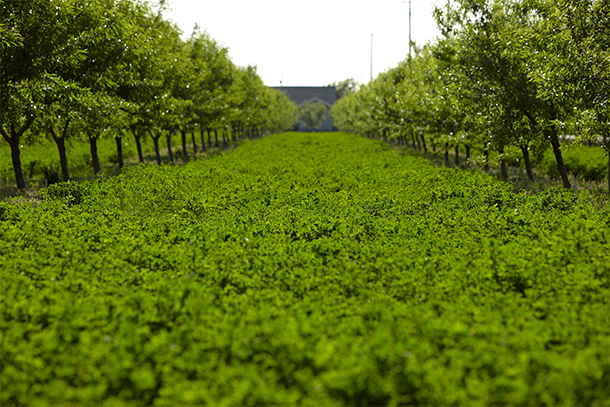Evers said the results so far with cover crops have helped him overcome some of his initial concerns.
“I grew up thinking about keeping orchard floors clean. Keep everything short and you either spray them down or float them out before harvest,” he admitted. “But in fields where we’ve implemented cover crops, we’ve found that if managed right, that root mass really holds that ground together when you’re going through harvest activities.
“So, one, you’re not beating up your equipment picking up soil and sand, but, two, you’re also emitting a lot less dust through your harvesting process, which obviously from an air quality standpoint is great. But then, just from a productivity and worker safety standpoint, the fact that you’ve got better air to breathe and you can see what’s going on around you, was really great.
“Unless it was poorly managed, there were no horror stories of all this trash to work through and a bunch of weeds getting in with the almonds.”
In addition, Evers said cover crops sped up how soon workers could get into the orchards after the wet season while reducing soil compaction on the orchard floor.
The introduction of cover crops is consistent with AgIS Capital’s core values, which equally balance economic, environmental and social objectives. Based on the company’s experience, Evers encouraged other growers to consider cover crops.
“Because the first year doesn’t always work out perfectly, but you have a safety net with some of the financial incentives," he said.
Listen to the full Almond Journey Podcast with AgIS Capital below.

